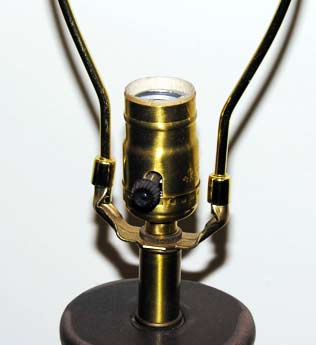The Standard Lamp: Still Burning Fingers
You already know how most standard lamps work. You reach up and push the plastic bar from one side to the other, or you twist a knob. You know this because these lamps have been the same for decades. That's normally great news for usability. Well-established standards make everyone happy because we all know what to expect. However, I would argue that standard lamp switches are kind of ridiculous. Sure, we're used to them, but that doesn't mean they're a good idea.

Let's get specific about my lamp grievances.
- The switch can't be seen.
Sure, you can fumble around with your hand until you find the switch, but you shouldn't have to. The manufacturer could have placed the switch on the base of the lamp or on the cord, like a modern lamp.
- The switch is by the light bulb.
After letting the bulb get hot for 30 minutes, it's time to turn off the lamp. No problem. All you have to do is stick your hand under the mystery curtain and feel around for the switch. It should be easy to find. It's right by the thing you're trying not to touch. Granted, CFL and LED light bulbs run much cooler than the old incandescent, but you can definitely still burn yourself on them.
Now, I'm sure many of you are saying, "It's never been a problem for me." I would have to disagree. I bet it has been a problem, but you've just gotten used to it. We don't realize how absurd it is anymore because it's been that way for so long. What if your car was like that? Imagine that you've just driven to the store and your engine is nice and hot. In order to turn off the car you have to use a switch located under the rear bumper next to the muffler. See what I'm saying?
If you want your new appliance, device, web app, or whatever you have to leave a nice impression on your customers, you need to think about your customers. There are probably features that have been used in your industry so long that they're just standard. It's a healthy practice to question why we do certain things, and whether or not they can be improved beyond "good enough."


